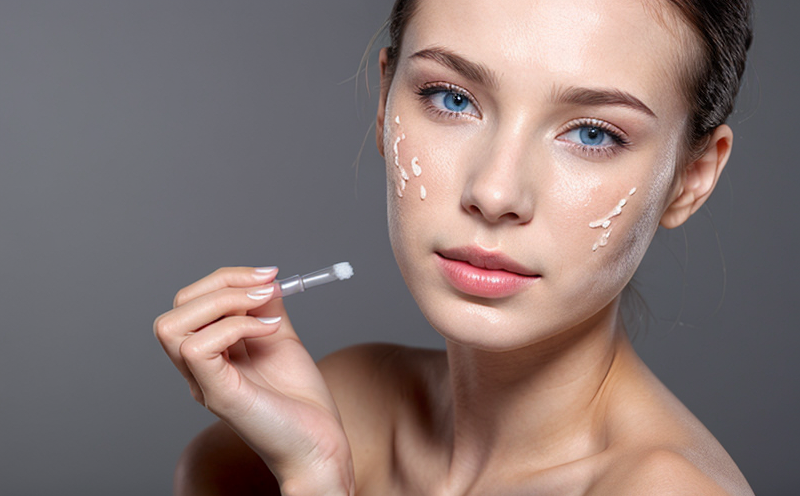Irritation Testing of Sunscreen Formulations
The irritation testing of sunscreen formulations is a critical step in ensuring the safety and efficacy of cosmetic products. This process aims to identify any potential adverse effects that sunscreens may have on the skin, particularly during extended exposure to sunlight. Skin irritation tests are essential for regulatory compliance and consumer protection.
During these tests, various methods are employed depending on the specific formulation and intended use. The most common test involves exposing human or animal skin to the sunscreen in question under controlled conditions. This allows researchers to observe any signs of inflammation or damage that could indicate irritation. The type of testing can vary based on the product's intended use, such as broad-spectrum sunscreens, mineral-based products, or those containing chemical filters.
The test parameters are meticulously defined by international standards like ISO 10993-18 and ASTM F2100. These guidelines ensure that all tests conducted follow a standardized approach, which is crucial for consistency across different laboratories worldwide. Specimen preparation typically involves applying the sunscreen to the skin in accordance with these specifications, ensuring accurate results.
Instrumentation used in these tests can range from simple visual assessments by dermatologists to more advanced techniques like confocal microscopy and histological analysis. These tools provide detailed insights into the skin's response, allowing for precise evaluation of any irritation levels. Reporting is comprehensive, detailing both quantitative measures such as erythema scores and qualitative observations about the overall condition of the tested area.
| Parameter | Description |
|---|---|
| Application Method | Uniform application across the test area |
| Dosing Rate | Defined by ISO standards, usually 2 mg/cm² |
| Incubation Period | Varies depending on the test method (e.g., 4 hours) |
| Evaluation Criteria | Based on erythema, swelling, and other visible signs of irritation |
The results from these tests are crucial for manufacturers to ensure their products meet stringent safety standards. By identifying potential irritants early in the development process, companies can make necessary adjustments before commercial release.
Why It Matters
Consumer trust is paramount in the cosmetics industry. Ensuring that sunscreens do not cause skin irritation when used as directed builds this trust and maintains brand integrity. Regulatory bodies worldwide have strict guidelines for cosmetic products, including sunscreen formulations. Failure to comply with these regulations can result in product recalls or legal action.
- Consumer safety is paramount
- Regulatory compliance ensures market access
- Positive brand reputation enhances consumer confidence
In addition to protecting consumers, irritation testing also helps manufacturers improve their products. By identifying and addressing potential irritants early in the development process, companies can enhance product performance while minimizing risks.
International Acceptance and Recognition
- The European Union (EU) requires all cosmetic products to undergo safety assessments before being placed on the market. This includes irritation testing for sunscreens.
- The United States Food and Drug Administration (FDA) mandates that manufacturers provide data demonstrating the safety of their products, including potential irritants in sunscreen formulations.
Various international standards such as ISO 10993-18 and ASTM F2100 are widely accepted across these regions. Compliance with these standards ensures that test results are valid and recognized globally.
| Standard | Summary of Key Requirements |
|---|---|
| ISO 10993-18 | Guidelines for in vivo and in vitro testing methods to evaluate the safety of medical devices, including skin irritation tests. |
| ASTM F2100 | Specific requirements for conducting skin irritation tests on sunscreen formulations. |
Use Cases and Application Examples
- Development of new sunscreen products
- Formulation optimization for existing sunscreens
- Safety evaluation before market release
| Use Case | Objective |
|---|---|
| New Product Development | Evaluate the irritation potential of a new sunscreen formulation before clinical trials. |
| Formulation Optimization | Determine if changes to an existing formula reduce or eliminate irritant properties. |
| Market Release Evaluation | Ensure compliance with local and international regulations prior to launch. |





